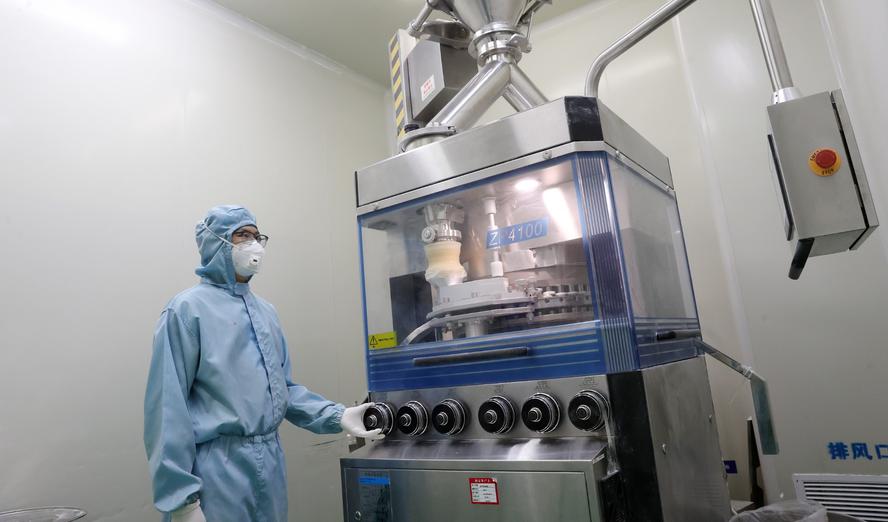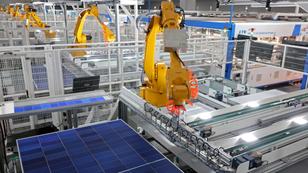As global trade tensions escalate, the United States may benefit from applying the concept of precision medicine to strengthen domestic resiliency in the biopharmaceutical industry. This could entail de-risking—without fully severing—drug supply chains with China.
For two decades, the economic synergy between China and the United States—often dubbed Chimerica (PDF)—has driven down drug development costs and fueled breakthroughs in the biopharmaceutical industry. This partnership, however, has led to U.S. reliance on Chinese contract development and manufacturing organizations (CDMOs).
A recent industry survey by the Biotechnology Innovation Organization found that U.S. biopharmaceutical companies offshore 30 percent of FDA-approved drug workflows to Chinese CDMOs. This number rises to 74 percent for outsourced preclinical and clinical services, including lead candidate selection, animal testing, and patient recruitment. Respondents further revealed that if forced to abandon these partnerships, locating a service provider with comparable drug development capabilities could take up to eight years.
U.S. biopharmaceutical companies offshore 30 percent of FDA-approved drug workflows to Chinese contract development and manufacturing organizations.
The link between the U.S. biopharmaceutical industry and Chinese production may present medical and national security risks. Given the depth of these dependencies, any rupture in supply chains—whether triggered by a health crisis or geopolitical tensions—could endanger millions of U.S. patients. Immediate decoupling may not be beneficial or even feasible. Rather, a gradual and targeted approach to de-risking drug supply chains and safeguarding national health security may be more prudent.
This strategy is predicated on recent policy activity. Last year, some members of Congress introduced legislation that signals a shift in how U.S. policymakers might view these vulnerabilities. Although these proposals did not advance, a focus on WuXi AppTec and WuXi Biologics as “biotechnology companies of concern” highlights the critical role that Chinese CDMOs play in drug supplies.
That initial legislative salvo may portend greater future oversight of these deeply interwoven biopharmaceutical ties. The Department of Commerce quickly followed suit by establishing tighter biotechnology export controls on laboratory equipment, thus echoing similar clampdowns in other high-tech fields. With policymakers aligned on the dangers of an overreliance on the Chinese biopharmaceutical ecosystem, the key may lie not in taking action but in structuring a strategic taper.
However, this strategy may not be easy for the U.S. biopharmaceutical industry. For U.S. companies, Chinese CDMOs may be an irresistible lure. Large-cap companies like Eli Lilly and smaller biotechnology firms like Iovance Biotherapeutics rely on WuXi services for FDA-approved therapeutics that treat obesity and cancer.
The Made in China 2025 initiative, meanwhile, underscores Beijing's efforts to move up the value chain from producing key starting materials and active pharmaceutical ingredients to becoming a biopharmaceutical leader. This goal is increasingly in reach, as China accounts for 23 percent of all innovative drug development globally.
Complicating matters further is the attention that Chinese drugmakers garnered at the 2025 J.P. Morgan Healthcare Conference. Consequently, U.S. investors and major pharmaceutical companies can find themselves balancing the allure of emerging Chinese therapeutics and continuing offshored drug development, with the risk that sudden decoupling could sever collaborations.
Despite the challenges inherent in gradually de-risking U.S. and Chinese pharmaceutical capabilities, there may be options for easing the pain while rebuilding U.S. drug supply chain resiliency.
First, the United States should not necessarily close the door on Chinese innovation. Doing so could undercut the U.S. biopharmaceutical industry's ability to provide market access to cutting-edge therapeutics, just as Chinese drugmakers begin ramping up their share of innovative drug development. Instead, the United States could continue supporting collaborative academic exchanges while backing U.S. biotechnology startups that seek to in-license and onshore promising Chinese drug assets—a strategy leveraged by venture capital firms.
Second, government and industry players could diversify the most essential biopharmaceutical supply chains by partnering with other nations (e.g., India, South Korea, Israel, Europe) as a near-term countermeasure to ensure that no single country can control U.S. health security.
Despite the challenges inherent in gradually de-risking U.S. and Chinese pharmaceutical capabilities, there may be options for easing the pain while rebuilding U.S. drug supply chain resiliency.
Third, targeted incentives to rebuild domestic biopharmaceutical manufacturing capabilities, via tax credits, advanced market commitments, and streamlined FDA processes, could begin addressing longstanding health security gaps, even if they cannot undo the decades-long effects of offshoring.
Fourth, the United States could take steps to protect sensitive intellectual property. This could include clear guidance on, and increased awareness of, the latest export control rules and restrictions for any U.S. biopharmaceutical firms entering a manufacturing partnership with Chinese CDMOs. Stricter compliance regimes and legal safeguards may be necessary, particularly for clinical assets that can be repurposed for military applications. These measures may need to be balanced, so the U.S. biopharmaceutical industry can engage in research collaborations that pose minimal security risks.
As the push to reorient supply chains accelerates, the U.S. biopharmaceutical industry increasingly finds itself at a crossroads with Chimerica: continue to benefit from Chinese scale and innovative talent or confront the risks inherent in deep interdependence. Just as precision medicine is tailored to the root causes of a patient's disease, strategic de-risking—through diversifying partnerships, rebuilding domestic capabilities and thoughtfully structuring existing U.S.-China collaborations—could address vulnerabilities and ensure U.S. health security.


